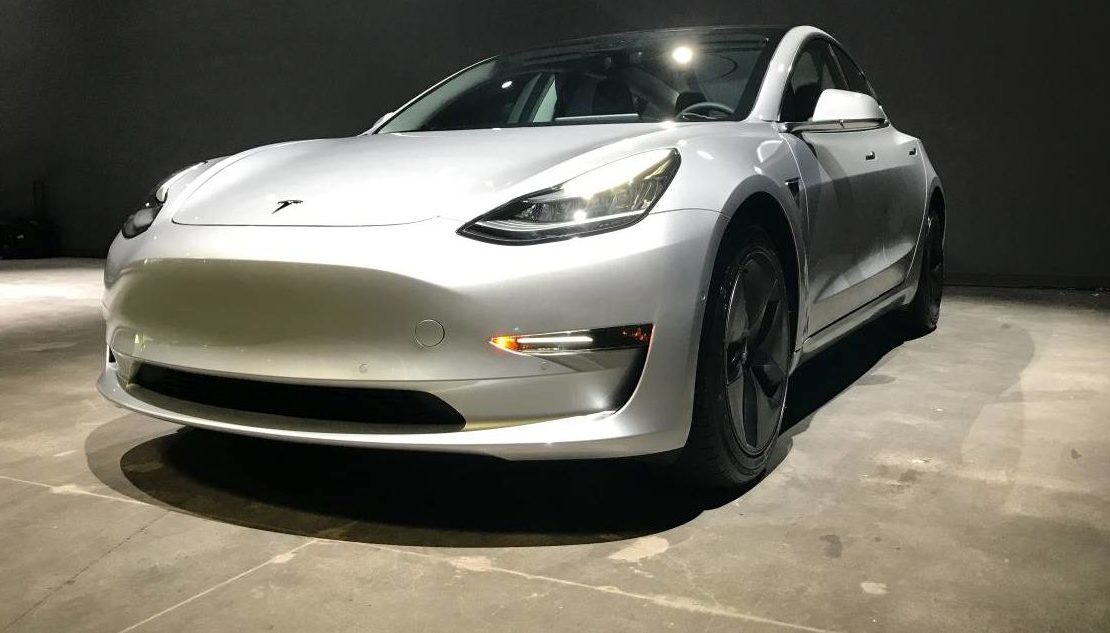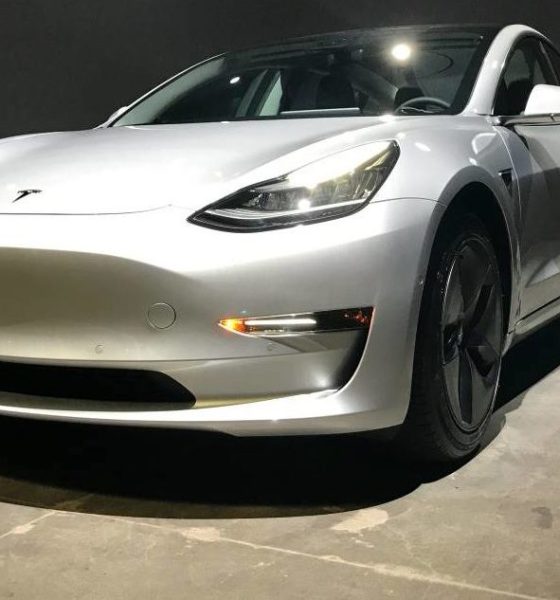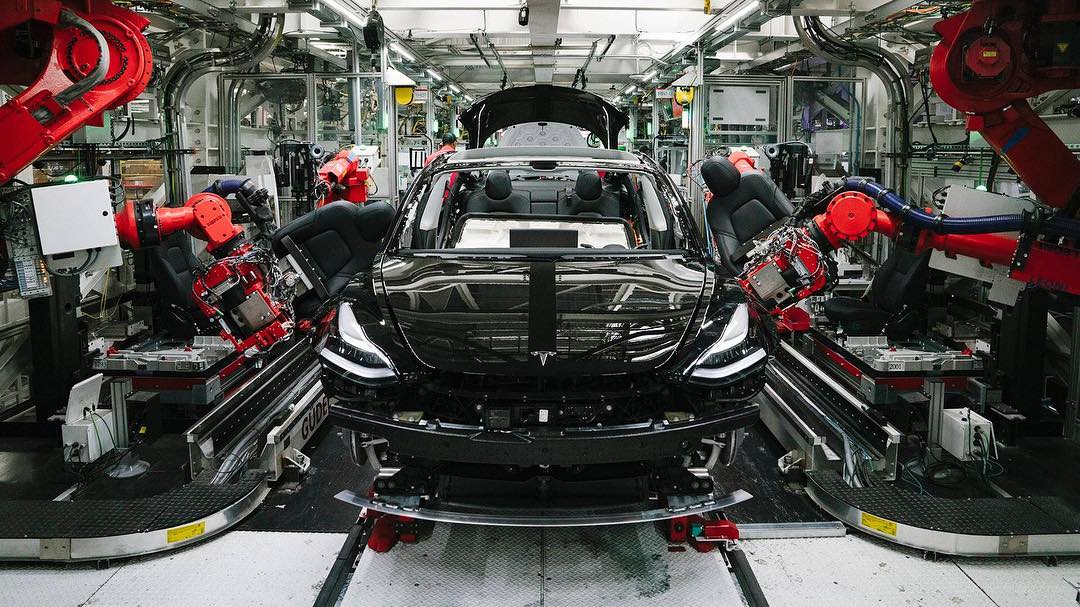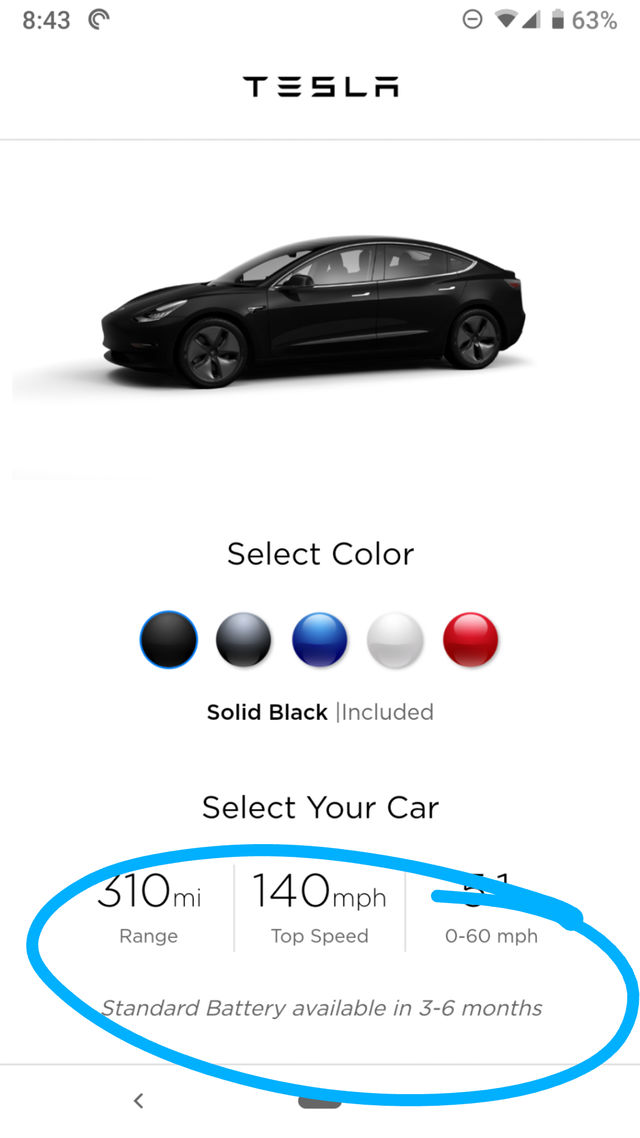

Investor's Corner
Tesla starts setting the stage for the $35k base Model 3’s production ramp
Tesla’s production ramp for the Model 3 has not been easy for the company. Since starting the production of the electric sedan last year, the Model 3 ramp has been beset by multiple challenges, including bottlenecks in both the Fremont factory and Gigafactory 1. That said, Tesla appears to have hit its stride in manufacturing the electric sedan in Q3.
The company’s production and delivery numbers for the quarter are yet to be announced, but estimates, including those from Tesla’s staunchest critics from Wall Street, are high that the company has achieved its target of manufacturing and delivering more than 50,000 Model 3 in the third quarter. And this is despite the company only producing three variants of the electric sedan — the Long Range RWD, Dual Motor AWD, and Dual Motor Performance Model 3. The variant of the electric car that is designed to be a true disruptor in the auto industry — the $35,000 Standard trim Model 3 — is yet to enter production.
The absence of the $35,000 base trim Model 3 in Tesla’s lineup is one of the remaining bear thesis against the company. Some of Tesla’s more aggressive short-sellers even insist that the $35,000 Model 3 is a myth. Kelly Blue Book analyst Rebecca Lindland, who canceled her Model 3 reservation due to delays in the electric car’s production, previously noted to Forbes that she is not sure Tesla will ever make the vehicle.
“I’m not sure there will ever be any $35,000 cars. I think there’s a chance the company will eventually say they’re canceling that version because there wasn’t as much customer interest, that nobody wanted it,” she said.

Elon Musk begs to differ. Earlier this year, Musk noted that Tesla would need to hit its stride producing the higher-margin Model 3 variants before it can begin manufacturing the $35,000 Standard trim Model 3. Musk has since provided brief updates on the vehicle, such as its estimated start of production in Q1 2019, as well as an AWD Dual Motor option for the electric car. Tesla’s head of investor relations Martin Viecha provided an estimated timeline for the electric car’s production while facilitating a tour of Gigafactory 1 as well, stating that the $35,000 base Model 3’s would ramp “in the next eight months,” translating to an April or May rollout.
Considering recent updates from Tesla’s Model 3 ramp, it appears that the electric car maker is starting to make preparations for the vehicle’s production. Gigafactory 1, for example, is set to receive upgrades from Panasonic that would enable it to produce more battery cells. Yoshio Ito, head of Panasonic’s automotive business, noted that three new battery cell production lines would be completed sooner than the Japanese company’s initial “end-of-2018” estimate. Apart from this, Tesla is also receiving upgrades in the form of new Grohmann machines that are expected to be installed at the end of Q3 or the beginning of Q4. The new Grohmann machines are designed to make module production in Gigafactory 1 three times faster and three times cheaper.
In the final weekend of Q3, updates from Elon Musk and the Tesla community suggested that the production ramp for the Model 3 is going even further. In an email to employees, Musk noted that production of Model 3 drive units had reached a rate of 10,000 per week. Reservation holders in forums such as the r/TeslaMotors subreddit have also noted that the estimated timeline for the $35,000 base Model 3 has remained consistent over the past months. As of October 1, reservation holders are given a 3-6 month timeline for the production of the $35,000 electric sedan.

The Tesla Model 3 is a critical part of Elon Musk’s Master Plan, which involved creating a mass-market car that is a preferable alternative to comparably-priced fossil fuel-powered vehicles. At $35,000, the Standard trim Model 3 would be in the same price range as some of America’s most ubiquitous cars like the Toyota Camry, whose top-of-the-line XSE V6 trim is priced at $34,950. Thus, if Tesla plays its cards right, the vehicle could become not just a top-selling electric car — it could very well be a fossil fuel car killer.
In true Tesla fashion, even the $35,000 Standard trim Model 3 is packed with features that are characteristic of the company. The base Model 3 has an estimated range of 220 miles per charge, a 0-60 mph time of 5.6 seconds, and a top speed of 130 mph. Just like Tesla’s less affordable vehicles, the base Model 3 is fitted advanced safety features, including eight cameras, forward radar, and 12 ultrasonic sensors enabling active safety technologies including collision avoidance and automatic emergency braking. Six front row airbags and two side curtain airbags are also fitted on the entry-level vehicle.

Investor's Corner
Tesla Full Self-Driving statistic impresses Wall Street firm: ‘Very close to unsupervised’
The data shows there was a significant jump in miles traveled between interventions as Tesla transitioned drivers to v14.1 back in October. The FSD Community Tracker saw a jump from 441 miles to over 9,200 miles, the most significant improvement in four years.

Tesla Full Self-Driving performance and statistics continue to impress everyone, from retail investors to Wall Street firms. However, one analyst believes Tesla’s driving suite is “very close” to achieving unsupervised self-driving.
On Tuesday, Piper Sandler analyst Alexander Potter said that Tesla’s recent launch of Full Self-Driving version 14 increased the number of miles traveled between interventions by a drastic margin, based on data compiled by a Full Self-Driving Community Tracker.
🚨 Piper Sandler reiterated its Overweight rating and $500 PT on Tesla $TSLA stock
Analyst Alexander Potter said FSD is near full autonomy and latest versions showed the largest improvement in disengagements, from 440 miles to 9,200 miles between critical interventions pic.twitter.com/u4WCLfZcA9
— TESLARATI (@Teslarati) December 9, 2025
The data shows there was a significant jump in miles traveled between interventions as Tesla transitioned drivers to v14.1 back in October. The FSD Community Tracker saw a jump from 441 miles to over 9,200 miles, the most significant improvement in four years.
Interestingly, there was a slight dip in the miles traveled between interventions with the release of v14.2. Piper Sandler said investor interest in FSD has increased.
Full Self-Driving has displayed several improvements with v14, including the introduction of Arrival Options that allow specific parking situations to be chosen by the driver prior to arriving at the destination. Owners can choose from Street Parking, Parking Garages, Parking Lots, Chargers, and Driveways.
Additionally, the overall improvements in performance from v13 have been evident through smoother operation, fewer mistakes during routine operation, and a more refined decision-making process.
Early versions of v14 exhibited stuttering and brake stabbing, but Tesla did a great job of confronting the issue and eliminating it altogether with the release of v14.2.
Tesla CEO Elon Musk also recently stated that the current v14.2 FSD suite is also less restrictive with drivers looking at their phones, which has caused some controversy within the community.
Although we tested it and found there were fewer nudges by the driver monitoring system to push eyes back to the road, we still would not recommend it due to laws and regulations.
Tesla Full Self-Driving v14.2.1 texting and driving: we tested it
With that being said, FSD is improving significantly with each larger rollout, and Musk believes the final piece of the puzzle will be unveiled with FSD v14.3, which could come later this year or early in 2026.
Piper Sandler reaffirmed its $500 price target on Tesla shares, as well as its ‘Overweight’ rating.
Investor's Corner
Tesla gets price target boost, but it’s not all sunshine and rainbows

Tesla received a price target boost from Morgan Stanley, according to a new note on Monday morning, but there is some considerable caution also being communicated over the next year or so.
Morgan Stanley analyst Andrew Percoco took over Tesla coverage for the firm from longtime bull Adam Jonas, who appears to be focusing on embodied AI stocks and no longer automotive.
Percoco took over and immediately adjusted the price target for Tesla from $410 to $425, and changed its rating on shares from ‘Overweight’ to ‘Equal Weight.’
Percoco said he believes Tesla is the leading company in terms of electric vehicles, manufacturing, renewable energy, and real-world AI, so it deserves a premium valuation. However, he admits the high expectations for the company could provide for a “choppy trading environment” for the next year.
He wrote:
“However, high expectations on the latter have brought the stock closer to fair valuation. While it is well understood that Tesla is more than an auto manufacturer, we expect a choppy trading environment for the TSLA shares over the next 12 months, as we see downside to estimates, while the catalysts for its non-auto businesses appear priced at current levels.”
Percoco also added that if market cap hurdles are achieved, Morgan Stanley would reduce its price target by 7 percent.
Perhaps the biggest change with Percoco taking over the analysis for Jonas is how he will determine the value of each individual project. For example, he believes Optimus is worth about $60 per share of equity value.
He went on to describe the potential value of Full Self-Driving, highlighting its importance to the Tesla valuation:
“Full Self Driving (FSD) is the crown jewel of Tesla’s auto business; we believe that its leading-edge personal autonomous driving offering is a real game changer, and will remain a significant competitive advantage over its EV and non-EV peers. As Tesla continues to improve its platform with increased levels of autonomy (i.e., hands-off, eyes-off), it will revolutionize the personal driving experience. It remains to be seen if others will be able to keep pace.”
Additionally, Percoco outlined both bear and bull cases for the stock. He believes $860 per share, “which could be in play in the next 12 months if Tesla manages through the EV-downturn,” while also scaling Robotaxi, executing on unsupervised FSD, and scaling Optimus, is in play for the bull case.
Will Tesla thrive without the EV tax credit? Five reasons why they might
Meanwhile, the bear case is placed at $145 per share, and “assumes greater competition and margin pressure across all business lines, embedding zero value for humanoids, slowing the growth curve for Tesla’s robotaxi fleet to reflect regulatory challenges in scaling a vision-only perception stack, and lowering market share and margin profile for the autos and energy businesses.”
Currently, Tesla shares are trading at around $441.
Investor's Corner
Tesla bear gets blunt with beliefs over company valuation

Tesla bear Michael Burry got blunt with his beliefs over the company’s valuation, which he called “ridiculously overvalued” in a newsletter to subscribers this past weekend.
“Tesla’s market capitalization is ridiculously overvalued today and has been for a good long time,” Burry, who was the inspiration for the movie The Big Short, and was portrayed by Christian Bale.
Burry went on to say, “As an aside, the Elon cult was all-in on electric cars until competition showed up, then all-in on autonomous driving until competition showed up, and now is all-in on robots — until competition shows up.”
Tesla bear Michael Burry ditches bet against $TSLA, says ‘media inflated’ the situation
For a long time, Burry has been skeptical of Tesla, its stock, and its CEO, Elon Musk, even placing a $530 million bet against shares several years ago. Eventually, Burry’s short position extended to other supporters of the company, including ARK Invest.
Tesla has long drawn skepticism from investors and more traditional analysts, who believe its valuation is overblown. However, the company is not traded as a traditional stock, something that other Wall Street firms have recognized.
While many believe the company has some serious pull as an automaker, an identity that helped it reach the valuation it has, Tesla has more than transformed into a robotics, AI, and self-driving play, pulling itself into the realm of some of the most recognizable stocks in tech.
Burry’s Scion Asset Management has put its money where its mouth is against Tesla stock on several occasions, but the firm has not yielded positive results, as shares have increased in value since 2020 by over 115 percent. The firm closed in May.
In 2020, it launched its short position, but by October 2021, it had ditched that position.
Tesla has had a tumultuous year on Wall Street, dipping significantly to around the $220 mark at one point. However, it rebounded significantly in September, climbing back up to the $400 region, as it currently trades at around $430.
It closed at $430.14 on Monday.








